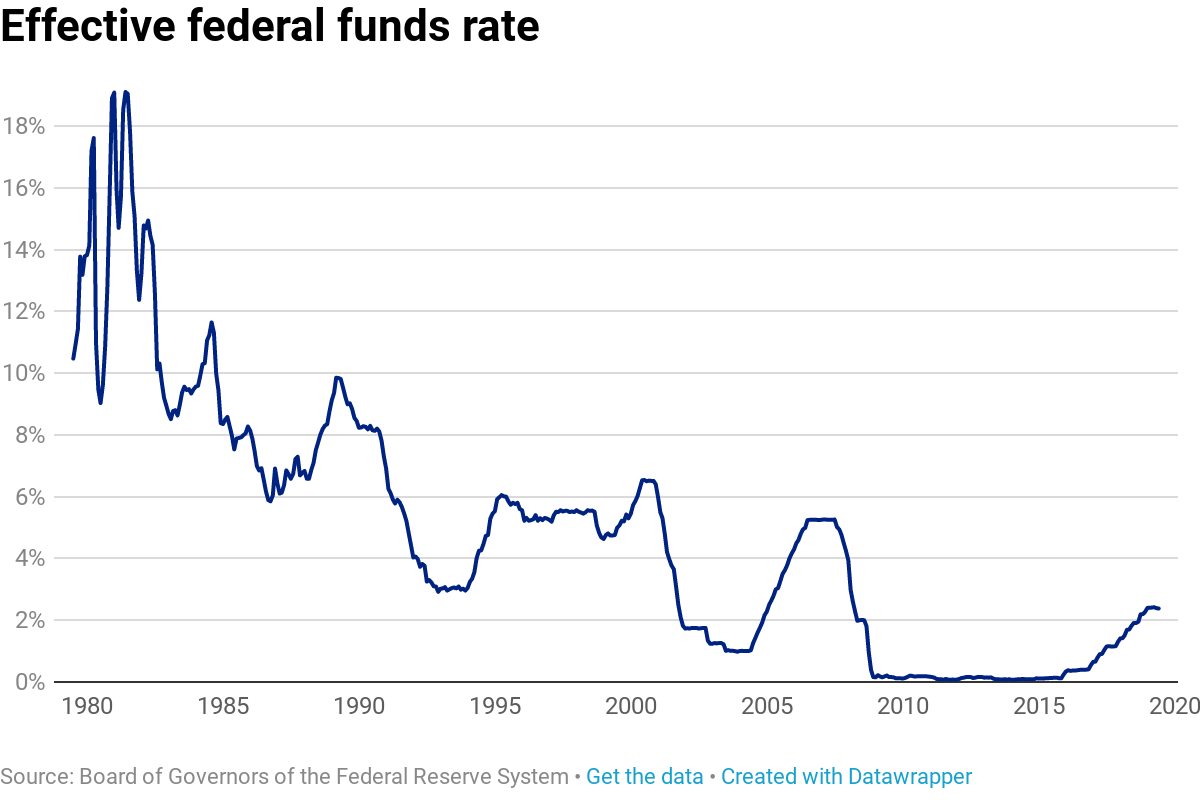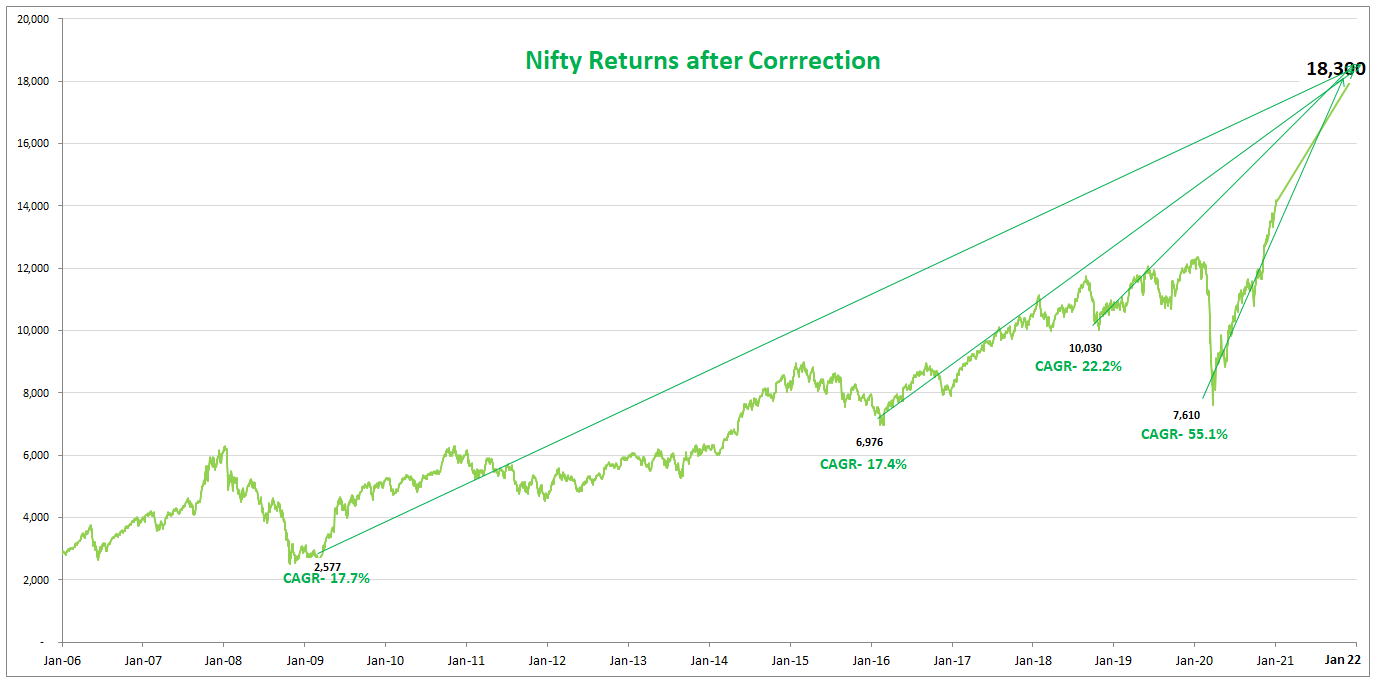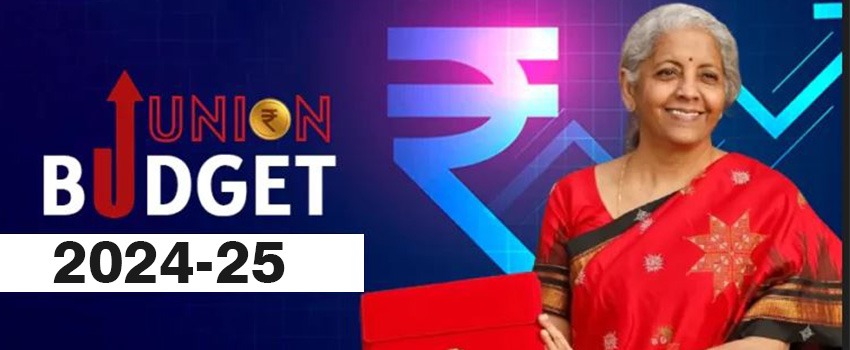Why this fall?
Markets have been trading at a premium over the last 4 months. We had highlighted in the previous month to be cautious about Nifty’s swift rally from 15,000 to crossing 18,000. There are various reasons why we saw a threat to Nifty running beyond its long-term average P/E. The key reasons for the current fall are the expectations of a hike in interest rates, FII selling, and rising inflation.
How does interest rate determine price movement?
In low-interest rates, the values of the assets go up and vice versa.
When the central bank raises interest rates, there is a ripple effect across the economy. Banks have to borrow at a higher rate, which in turn charge higher interest rates to their consumers. For companies, this means, higher interest expenses and low free cash flow. As cash flow starts declining, stock prices decline too. For individual consumers too it means low disposable income as borrowing costs rise. This leads to low spending power, again adversely impacting businesses’ revenue and profits and thus their stock prices. rise
Interest rate towards the rising trajectory
The U.S. Federal Reserve is moving toward policy re-normalization after having zero percent interest rates. Although the timing was widely debated, last month the Fed announced that it will gradually slow, or taper, its pace of quantitative easing.
As seen in the above chart, the US has seen 40 years of declining interest regime and almost a decade-long low-interest rate scenario. Post the Global Financial Crisis of 2008, the interest rates have been low leading to high liquidity.
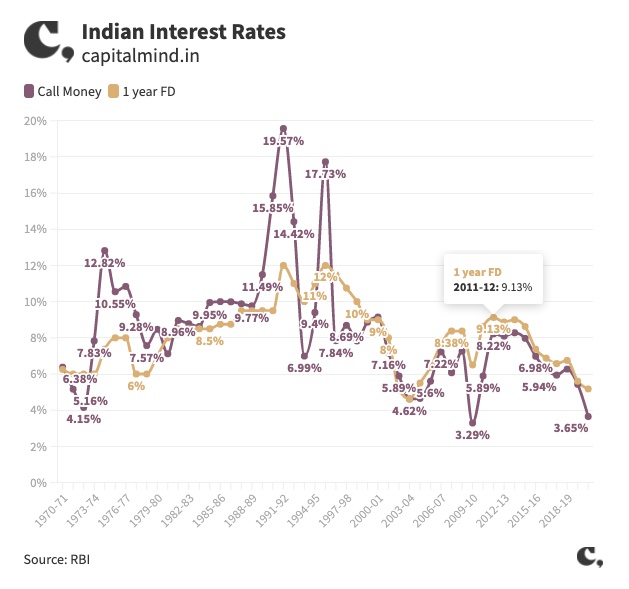
In India, we are used to a high-interest rate economy. As seen in the above chart, our average interest rates are far higher than what they are in the US. The real issue is to the developed world where they have seen 40 years of declining interest rates.
This has happened in the past
Rising interest rates leading to FII selling is not something new and has happened in the past in 2013, 2016 and 2018-19.
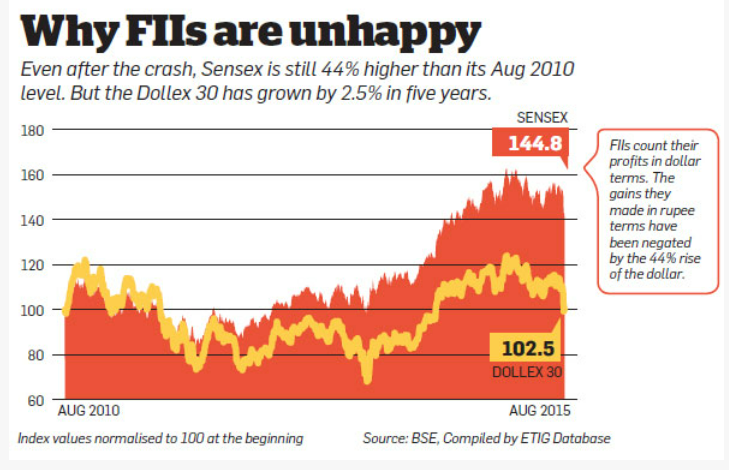
In 2013, as the world was coming out of a global financial crisis, the Federal Reserve said it would gradually reduce quantitative easing instituted after the Lehman Brothers bankruptcy in 2008. This announcement by the then chairman Ben Bernanke led to panic across the globe as investors pulled their money, leading to sharp outflow from emerging markets, including Asia, and forced central banks to hike interest rates.
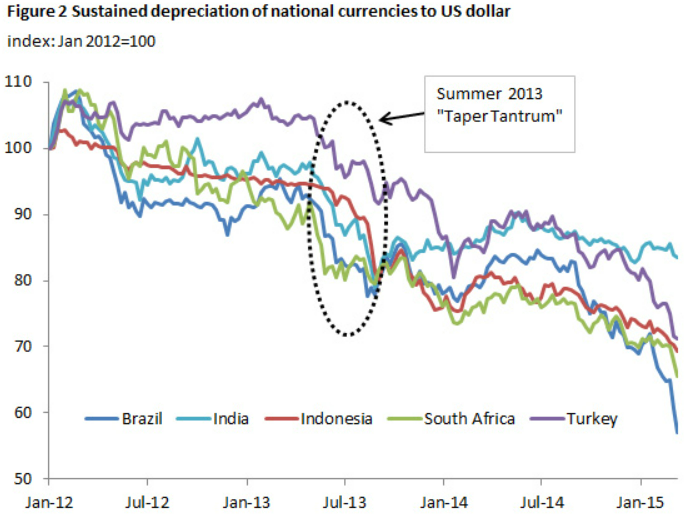
India is one of the economies with huge capital inflows. As the money was pulled out by FIIs, the rupee fell by over 15% between late May and late August 2013. This forced RBI to raise interest rates to try and stem the outflow. India however, sailed through that situation then. As against $275 billion in forex reserves in August 2013, India’s forex currently stands at $582.27 billion. Also, there is a confidence that the economy stands at a sweet spot and the country is more independent to deal with a taper tantrum-like situation.
Where are we in the larger scheme of things?
Post- covid, we are seeing a normalization of economic activities visible in IIP and GST collection numbers.
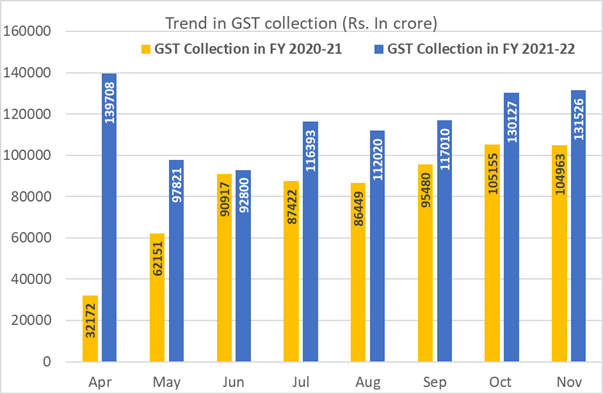
The Indian corporate sector is in the best position to gain pricing power and balance sheet strength. The majority of the sectors have seen consolidation. We are seeing this across sectors: Power, Telecom, Cement, Banks, NBFCs, Real Estate, building materials, Paper, pharma, capital goods, consumer durables, etc. This will give strong profitability for incumbents due to the high barrier to entry for the next few years. Corporates have better balance sheets than pre-covid, Government policies are more favorable for future economic growth than pre-covid. The worst recessionary fear is behind us as several inferior companies are already bust and the balance sheets of the banks are cleaner.
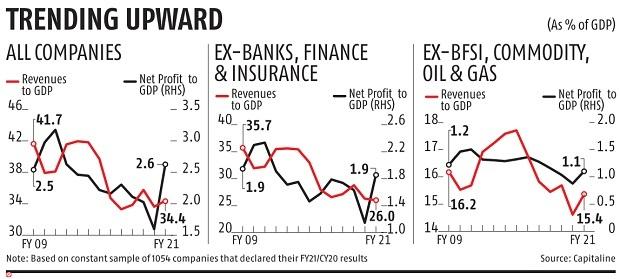
Keeping aside the current valuation, we are optimistic about the Indian economy over the next 5 years. Even if we purchase shares at slightly higher prices, there is a good chance of earning healthy returns over the next 5 years. The Nifty returns have been impressive after every correction. Hence, correction is the best time to become even more positive on equities.
What to do now?
At MoneyWorks4me, we stick to the process. Our process is to buy quality and fundamentally good companies at reasonable prices. Due to the overvaluation in the market in the past few months, we haven’t found any good opportunity and hence, there have been no buy calls.
However, looking at the recent correction, in the hindsight it seems like the process has worked. No buy calls and more number of sell calls in last 6 months have proven right. Now that correction is happening, we expect more opportunities and more buy calls in the coming months.
We recommend not disturbing the equity portion in your asset allocation. Changing your asset allocation will reduce long-term returns or miss out on the target corpus.
If you have decided to stay with 60% Equity and 40% debt, you can rebalance but do not deviate much from 60% in Equity. We have a diversified stocks portfolio and a long-term horizon. Together this takes care of all potential risks in investing.
If we look at past data, there was an 85% chance of beating FD return on 5 year period. If your time horizon is long-term (5 years+), the current valuation will matter less and near-term events become irrelevant. We do not find any merit in second-guessing what’s going to happen in the next 6 months-1 year.
Need help on Investing? And more….Puchho Befikar
Why MoneyWorks4me | Call: 020 6725 8333 | WhatsApp: 8055769463



